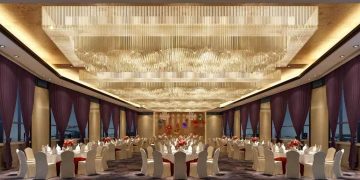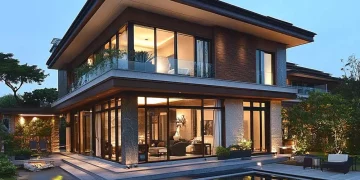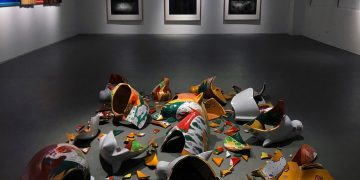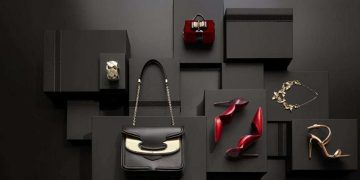Introduction: How Cities Like Paris, Milan, and New York Shape the Cultural Landscape
In a world where culture is not just a reflection of history but a statement of modern luxury and style, certain cities stand as global epicenters that define the direction of art, fashion, and social events. Paris, Milan, New York, and London are often referred to as the cultural capitals of the world, shaping not just local but global trends and tastes. These cities provide more than just a backdrop for elite fashion shows, world-class art exhibitions, and lavish galas; they are the very crucibles where culture and luxury intersect.
For decades, these cities have played a significant role in defining what it means to live a luxurious life. They set the bar for what is fashionable, iconic, and exclusive, becoming aspirational destinations for the wealthy and influential. But beyond the glamour, these cities have a rich cultural heritage that continues to influence new generations of artists, designers, curators, and tastemakers.
In this article, we will explore how cities like Paris, Milan, New York, and London have shaped the cultural landscape, delving into their impact on fashion, art, and exclusive events. We will also look at emerging cultural hotspots, and how these cities continue to evolve as the new centers of luxury and creativity.
Iconic Fashion Weeks: Paris, Milan, New York, and London—Showcasing the World’s Top Designers
No discussion of global cultural capitals would be complete without diving into the world of fashion, and the pinnacle of this industry lies in the world-renowned Fashion Weeks held annually in Paris, Milan, New York, and London. These cities host the most prestigious fashion events on the planet, where the top designers showcase their latest collections for the upcoming seasons.
1. Paris Fashion Week: The Heart of Haute Couture
Paris has long been the undisputed fashion capital of the world. Its legacy as the birthplace of haute couture continues to shape the global fashion industry today. Paris Fashion Week, held biannually in the spring and fall, is arguably the most important event in the fashion calendar. Here, some of the most revered names in fashion, including Chanel, Louis Vuitton, Dior, and Givenchy, present their latest creations to an audience that includes the world’s most influential buyers, editors, and celebrities.
Paris is synonymous with sophistication and innovation in fashion. The city’s fashion houses have maintained their prestige for over a century, and every season’s Paris Fashion Week is a display of high artistry and opulence. Whether it’s the couture gowns of Dior or the forward-thinking designs of Balenciaga, Paris remains at the pinnacle of global fashion.
2. Milan Fashion Week: The Epicenter of Luxury and Elegance
Milan, often considered the beating heart of Italian fashion, is the city where opulence and innovation come together. Milan Fashion Week, held twice a year, is known for showcasing some of the most iconic luxury brands in the world, including Gucci, Prada, Versace, and Dolce & Gabbana. Milan’s fashion shows are a reflection of the city itself—stylish, elegant, and always on the cutting edge.
Milan is not just about the runway shows; it’s also about the atmosphere. The city comes alive with exclusive after-parties, brand activations, and VIP events. For those in the know, Milan is a city where business is often conducted in the form of private dinners, closed-door presentations, and discreet meetings.
3. New York Fashion Week: The City of Innovation and Diversity
As one of the most diverse and dynamic cities in the world, New York has a fashion scene that is as varied as its population. New York Fashion Week (NYFW) is known for its mix of high fashion and street style, bringing together the old and the new in a unique blend of creativity and innovation. The city’s commitment to inclusivity and diversity has made NYFW a platform for emerging designers, avant-garde collections, and the breaking of traditional boundaries.
While Paris and Milan may focus on luxury and opulence, New York Fashion Week tends to push boundaries and embrace the experimental. Designers such as Marc Jacobs, Vera Wang, and Ralph Lauren have turned the city’s fashion week into one of the most important events in the industry.
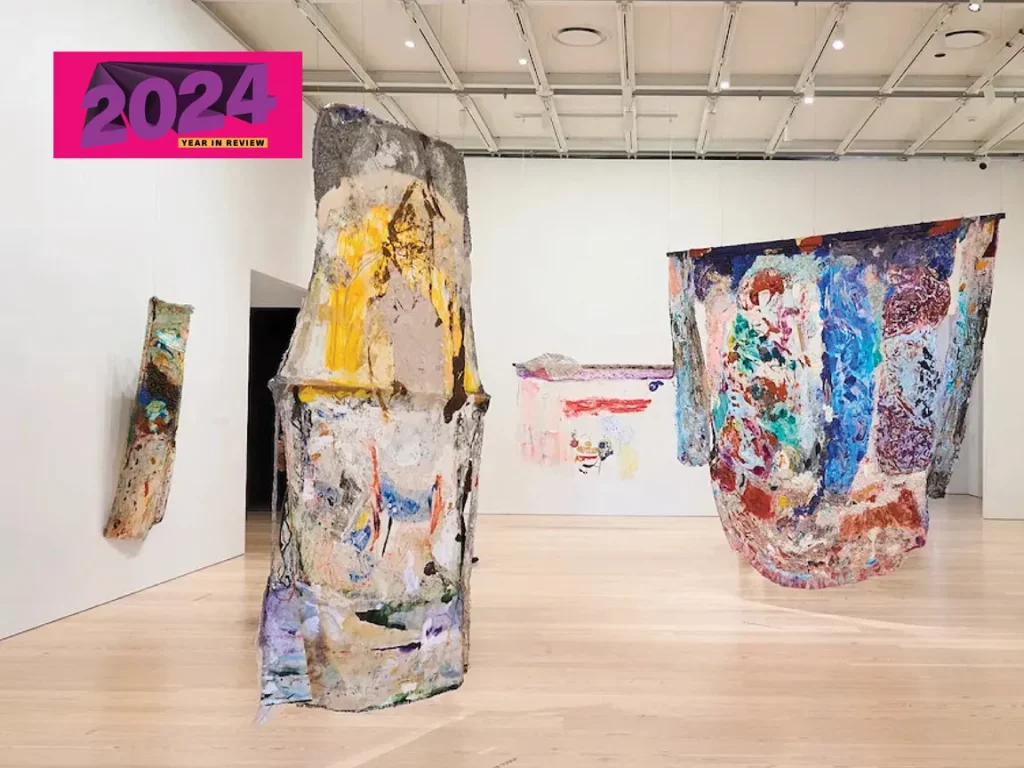
4. London Fashion Week: Where Tradition Meets Avant-Garde
London has long been known for its avant-garde and rebellious approach to fashion. London Fashion Week stands out for its focus on cutting-edge design, with a particular emphasis on young talent and emerging designers. The city has given rise to some of the world’s most innovative designers, including Alexander McQueen, Vivienne Westwood, and Stella McCartney.
London’s fashion scene is a mix of traditional British tailoring and bold, unconventional creations. London Fashion Week attracts fashion-forward individuals who seek to challenge the norms and embrace new, experimental styles.
Art and Architecture: Exploring Galleries, Museums, and Architectural Marvels
While fashion may be the most visible aspect of a city’s cultural capital status, the art and architecture scene is equally significant. Iconic museums, galleries, and architectural landmarks not only preserve history but also contribute to the city’s ongoing dialogue about culture, beauty, and creativity.
1. Paris: A Treasure Trove of Art and Architecture
Paris is home to some of the most famous museums in the world, including the Louvre, the Musée d’Orsay, and the Centre Pompidou. The Louvre, in particular, holds some of the world’s most iconic works of art, including the Mona Lisa and the Venus de Milo. The city’s architectural landscape is equally impressive, with landmarks like the Eiffel Tower, Notre Dame, and the modernist Centre Pompidou offering a visual feast for art lovers.
Paris also remains the hub for emerging art movements, with galleries like the Gagosian and the Fondation Louis Vuitton leading the way in contemporary art.
2. Milan: The Intersection of Art and Design
Milan is not only the heart of luxury fashion but also a center of art and design. The city boasts architectural masterpieces such as the Duomo di Milano and Leonardo da Vinci’s famous “The Last Supper,” which is housed in the Convent of Santa Maria delle Grazie. Milan is also home to the Triennale di Milano, which hosts some of the world’s most innovative design exhibitions.
The Milanese aesthetic is rooted in sleek, modern design, and the city’s architectural landscape reflects this in its mix of contemporary structures and classical buildings.
3. New York: A Melting Pot of Global Art Movements
New York City is undoubtedly one of the most important art capitals in the world, with iconic museums like The Metropolitan Museum of Art, the Museum of Modern Art (MoMA), and the Whitney Museum of American Art. These institutions not only showcase the world’s finest classical and contemporary art but also provide a platform for cutting-edge exhibitions and emerging artists.
The city’s architectural landscape, from the Art Deco grandeur of the Empire State Building to the modernist lines of the Guggenheim Museum, is a testament to New York’s rich cultural heritage and forward-thinking spirit.
4. London: A Historic and Contemporary Art Hub
London’s art scene is as eclectic as the city itself. From the historic walls of the British Museum to the contemporary galleries of the Tate Modern, London offers a diverse range of art exhibitions. The National Gallery houses some of Europe’s finest Renaissance and Baroque masterpieces, while the Tate Modern focuses on cutting-edge contemporary art.
London’s architecture blends the old with the new, with landmarks like Buckingham Palace and the Tower of London standing alongside modern structures like The Shard and the Gherkin.
Exclusive High-Society Events: The Most Anticipated Galas, Charity Balls, and Elite Soirées
Beyond art and fashion, luxury cities are also known for hosting exclusive high-society events. These events—whether galas, charity balls, or private soirées—bring together the world’s elite in a celebration of glamour, philanthropy, and networking.
1. The Met Gala (New York)
The Met Gala, held annually in New York City, is arguably the most exclusive event on the global social calendar. Organized by the Costume Institute of the Metropolitan Museum of Art, this event brings together the world’s most influential celebrities, designers, and socialites, all dressed to impress in custom couture. The event is both a fundraiser for the museum and a celebration of fashion and culture.
2. The Venice Film Festival (Venice)
The Venice Film Festival is one of the oldest and most prestigious film festivals in the world, and it has become a glamorous gathering of celebrities, filmmakers, and international stars. The event’s red carpet is a place where fashion, film, and luxury collide, making it one of the most eagerly awaited cultural events each year.
3. The Monaco Grand Prix (Monaco)
The Monaco Grand Prix is more than just a race; it’s a celebration of luxury, speed, and exclusivity. Held on the streets of Monte Carlo, the event attracts royalty, celebrities, and billionaires, all gathered to witness one of the most prestigious motor races in the world.
Future Cultural Hotspots: Emerging Cities Becoming New Cultural Epicenters
While cities like Paris, Milan, and New York remain dominant cultural hubs, emerging cities are quickly making a name for themselves as cultural epicenters. Cities like Dubai, Tokyo, and Singapore are investing heavily in art, design, and fashion, aiming to reshape the global cultural map.
1. Dubai: The Luxury Capital of the Middle East
Dubai has become a major player in the luxury world, with its world-class architecture, shopping, and art galleries. The city’s rapid growth has turned it into a cultural hub, with the Dubai Opera and the Alserkal Avenue art district leading the way in terms of cultural innovation.
2. Tokyo: A Fusion of Tradition and Modernity
Tokyo is known for its cutting-edge fashion and design, blending traditional Japanese aesthetics with contemporary flair. The city is becoming an increasingly important player in the global fashion scene, with designers like Issey Miyake and Rei Kawakubo leading the charge.
Conclusion: Why These Cities Define Modern Luxury Culture and Style
In a world where culture is the ultimate luxury, cities like Paris, Milan, New York, and London remain the gold standards by which all others are measured. From fashion weeks to art exhibitions, galas to architectural marvels, these cities offer a living testament to the power of creativity and exclusivity. As new cultural hotspots emerge, the future of luxury living will continue to be shaped by these global capitals, ensuring that culture remains at the heart of luxury.










